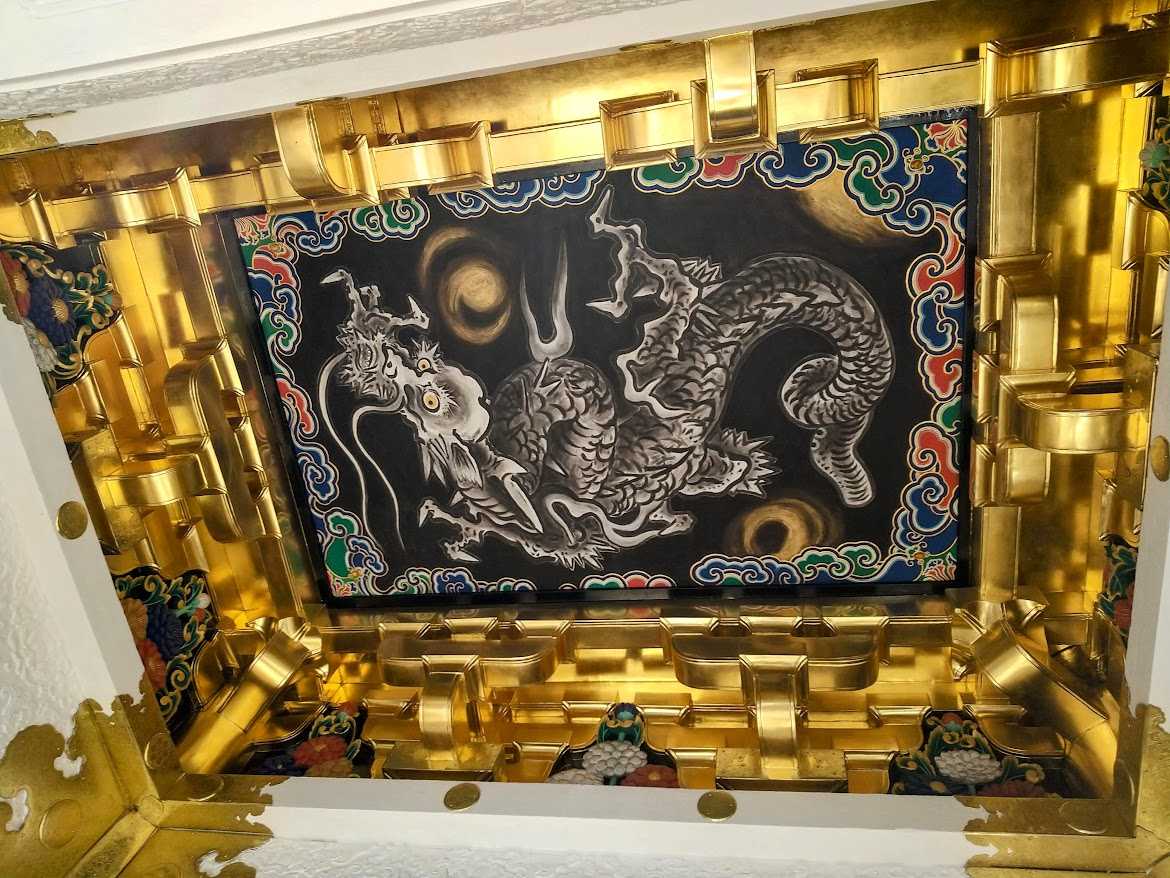The Temple Where You Can Hear a Dragon’s Roar: The Tale of the “Roaring Dragon”
05/26/2025

Others
“At the very spot beneath the dragon’s head painted on the ceiling, if you strike clappers, the dragon roars.”
I experienced this fantastical phenomenon at the Yakushidō Hall, also known as the Roaring Dragon, within Nikkō Tōshō-gū Shrine.
But this isn’t just a legend. It’s a miracle born of architecture and acoustics—an “acoustic cultural heritage” that was once lost and later revived through the power of science.
…The Three Wise Monkeys, the Sleeping Cat, the masterful traditional carvings, and the tomb of Tokugawa Ieyasu.
I had arrived at Nikkō Tōshō-gū with only shallow knowledge and no prior research.
After wandering around the grounds for a while, I noticed a large crowd gathered off to the side.
There had also been a crowd at the Sleeping Cat, where everyone was eager to take photos—but this crowd was twice the size.
Apparently, this was the Yakushidō Hall, and something worth lining up for was taking place.
Curious, I joined the line.
The sign read “Roaring Dragon.”
While most of the surrounding structures are classified as shrines, this hall appeared to be a Buddhist temple.
A staff member reminded everyone not to clap their hands.
Groups were ushered into the hall in turns, much like a Disneyland attraction, about 50 people at a time.
As we waited, we could hear the faint clack, clack sound of wooden clappers through the wall.
“Wait… is that it?”
It just sounded like a typical reverberation.
Something I had already experienced in a reverberation chamber. My expectations dimmed a bit.
Then, it was our turn.
Inside the hall, a monk began explaining the main structure and the dragon painted on the ceiling.
And how, if you strike the clappers right beneath the dragon’s head, you can hear the roar of the dragon.
The demonstration began.
The clappers sounded—kaaan, kaaan—and then…
A sharp resonant tone rang out: Fweeeeeeeeooo…
The audience gasped in amazement.
So did I.
Who’s ever heard a dragon’s roar?
But if dragons really existed and made a sound, it would probably be like this.
The image of Rayquaza from Pokémon flashed through my mind.
Then the monk struck the clappers again—this time just one step away from the earlier spot.
The result was clear.
Only a dry clack, clack rang out.
Why did the effect only occur in that one specific spot?
Was there some kind of hidden device in the ceiling, like a sound mixer?
Or a backstage staff member playing a sound effect in real time?
Of course not.
And yet, I kept thinking, trying to understand how it worked—my thoughts circling like the dragon spiraling up into the sky.
In the car on the way home, I researched the Roaring Dragon and decided to write this article.
What is Yakushidō Hall?
The “Honjidō” Hall of Nikkō Tōshō-gū was once built to enshrine Yakushi Nyorai, the Buddha of healing, who was considered the spiritual counterpart of Tokugawa Ieyasu.
Thus, it’s commonly referred to as “Yakushidō.”
A large dragon painting by the Kano-school artist Eishin Yasunobu adorns the ceiling.
When a sound is made directly beneath the dragon’s head, a reverberation echoes as though the dragon is roaring.
This phenomenon came to be known as the Roaring Dragon.
Interestingly, it wasn’t recorded until the Meiji era—suggesting it was a serendipitous discovery.
The Dragon’s Roar Was Once Lost
In 1961 (Shōwa 36), Yakushidō Hall was completely destroyed by fire.
The ceiling painting and the mysterious acoustics—it was all reduced to ash.
“I want to hear that roar again…”
Moved by that wish, the Tochigi Prefectural government and a group of researchers launched a five-year restoration project in 1963.
Relying on science, engineering, old documents, and archived recordings, they set out to recreate the once-lost sound.
Why Does It Roar Only There?
Why does the Roaring Dragon phenomenon occur only directly beneath the dragon’s head?
The answer lies in sound reflection and convergence—specifically, acoustic focusing.
- The ceiling is slightly domed (a shape known as mukuri), forming a curved surface
- The lacquered floor is flat and hard, giving it high reflectivity
- The surrounding walls are lattice-style, allowing sound to escape—minimizing unwanted echoes
This design causes sound to bounce vertically between floor and ceiling.
The gentle dome shape of the ceiling acts like an acoustic lens, focusing the sound waves.
As a result, when you stand exactly beneath the dragon’s head, the reflected sound converges at that point and creates the long, shimmering Kyuuiiin… resonance.
This is an example of spatial acoustic focusing, and from a technical standpoint, it could be described as a localized standing-wave reverberation effect.
Recreating the Dragon’s Roar with Models and Experiments
To reproduce the original sound, researchers created a 1/4 scale model and meticulously tested:
- The ceiling’s mukuri curvature
- The distance to the floor
- The position of the sound source
- The size of the source (e.g., human shoulder width, speaker diameter)
The results?
- A curvature of 3 sun (about 9 cm) produced the longest and most pleasant Roaring Dragon sound
- Placing the sound source slightly off-center from the ceiling’s center gave a richer, more oscillating tone
In short, the Roaring Dragon’s roar was not a mere accident.
Its sound is the result of intentional architecture, materials, dimensions, and the precise position of the clappers—
a “miraculous composition” in perfect harmony.
In Conclusion
The sound of the Roaring Dragon is a phenomenon that can be scientifically explained—
yet it still evokes a sense of wonder.
“Architecture is not only to be admired visually—but listened to.”
Perhaps that idea begins here, with the Roaring Dragon.
References & Diagrams
- Acoustic Cross-section Diagram of Yakushidō Hall (Roaring Dragon), Nikkō Tōshō-gū
- Seikō Ishii & Okihiko Hirano, “Study on the Reconstruction of the Roaring Dragon at Honjidō” (1965)